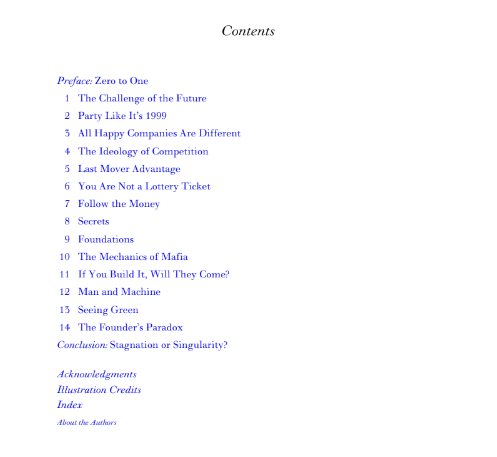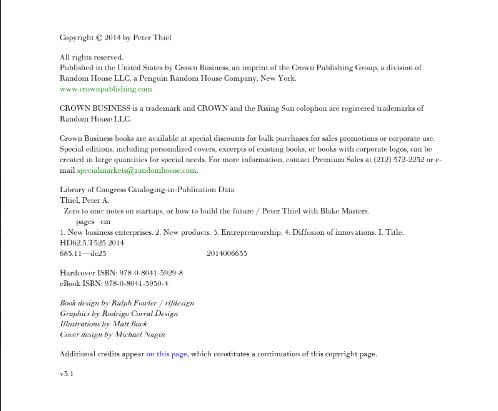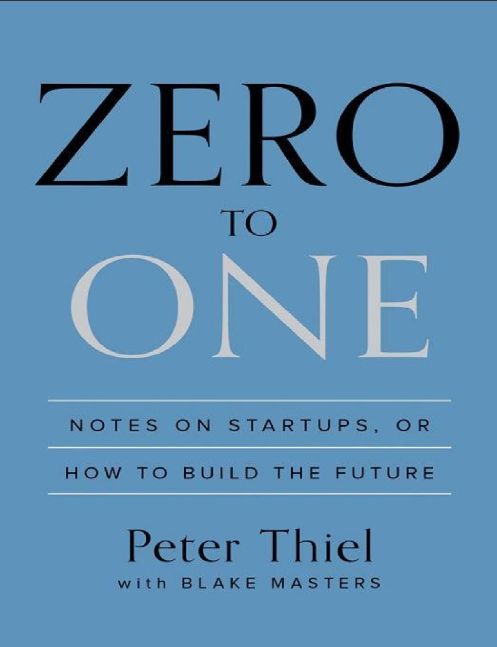


The provided text excerpts discuss the concept of **innovation and creation**, particularly within the context of building businesses and shaping the future. Key themes include: * **”Zero to One” Innovation:** The central idea is that true innovation involves creating something entirely new (moving from 0 to 1) rather than merely improving or copying existing things (moving from 1 to n). The text argues that future successes will not come from imitation but from novel invention. *
**Contrarian Thinking and First Principles:** The author emphasizes the importance of challenging conventional wisdom and “best practices.” Instead of following established formulas, successful entrepreneurs think from first principles and seek unique, often contrarian, answers. *
**The Nature of the Future:** The future is not just a distant point in time but a state where the world looks significantly different from today, driven by radical change. While difficult to predict exactly, the future is characterized by difference and must be rooted in present realities. * **Human Uniqueness in Creation:** Humans are distinguished by their ability to create new things from imagination, a process that technology enables and amplifies, allowing us to work “miracles.” *
**The Book “Zero to One”:** The excerpts introduce a book of the same name, drawing on the author’s experiences as a co-founder of PayPal and Palantir, and as an investor. The book aims to teach entrepreneurship by focusing on unique innovation rather than providing a prescriptive formula, as each innovation is inherently singular. It stems from a Stanford course designed to help students create the future beyond their academic specialities.
The provided text argues that **technology, rather than globalization, is the primary driver of the future.** The author challenges the common belief that globalization will define the world’s future, stating that without new technological advancements, globalization can lead to unsustainable outcomes like environmental catastrophe and resource depletion. The text contrasts this with historical periods, describing how early societies were “static” and relied on seizing resources. It highlights that significant wealth creation and societal improvement only became possible through periods of relentless technological progress, such as the advent of the steam engine, which led to a much richer society than previous generations could have imagined. Therefore, the author emphasizes that new technology is essential for creating wealth and shaping a positive future, especially in a world of scarce resources.
New technology tends to come from new ventures—startups. From the Founding Fathers in politics to the Royal Society in science to Fairchild Semiconductor’s “traitorous eight” in business, small groups of people bound together by a sense of mission have changed the world for the better. The easiest explanation for this is negative: it’s hard to develop new things in big organizations, and it’s even harder to do it by yourself. Bureaucratic hierarchies move slowly, and entrenched interests shy away from risk. In the most dysfunctional organizations, signaling that work is being done becomes a better strategy for career advancement than actually doing work (if this describes your company, you should quit now).
At the other extreme, a lone genius might create a classic work of art or literature, but he could never create an entire industry. Startups operate on the principle that you need to work with other people to get stuff done, but you also need to stay small enough so that you actually can. Positively defined, a startup is the largest group of people you can convince of a plan to build a different future. A new company’s most important strength is new thinking: even more important than nimbleness, small size affords space to think. This book is about the questions you must ask and answer to succeed in the business of doing new things: what follows is not a manual or a record of knowledge but an exercise in thinking. Because that is what a startup has to do: question received ideas and rethink business from scratch.
This conclusion was understandable but misplaced. In December ’96—more than three years before the bubble actually burst—Fed chairman Alan Greenspan warned that “irrational exuberance” might have “unduly escalated asset values.” Tech investors were exuberant, but it’s not clear that they were so irrational. It is too easy to forget that things weren’t going very well in the rest of the world at the time. The East Asian financial crises hit in July 1997. Crony capitalism and massive foreign debt brought the Thai, Indonesian, and South Korean economies to their knees.
The ruble crisis followed in August ’98 when Russia, hamstrung by chronic fiscal deficits, devalued its currency and defaulted on its debt. American investors grew nervous about a nation with 10,000 nukes and no money; the Dow Jones Industrial Average plunged more than 10% in a matter of days. People were right to worry. The ruble crisis set off a chain reaction that brought down Long-Term Capital Management, a highly leveraged U.S. hedge fund. LTCM managed to lose $4.6 billion in the latter half of 1998, and still had over $100 billion in liabilities when the Fed intervened with a massive bailout and slashed interest rates in order to prevent systemic disaster. Europe wasn’t doing that much better.
The euro launched in January 1999 to great skepticism and apathy. It rose to $1.19 on its first day of trading but sank to $0.83 within two years. In mid-2000, G7 central bankers had to prop it up with a multibillion-dollar intervention.


